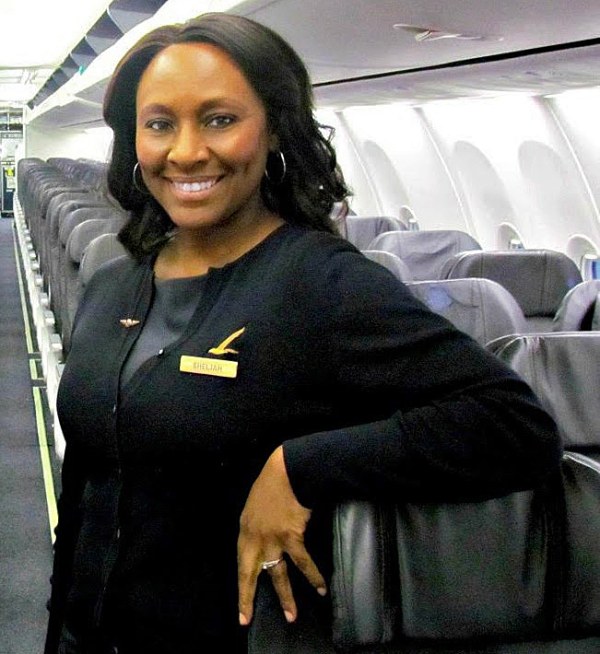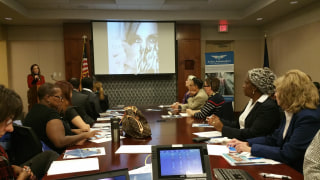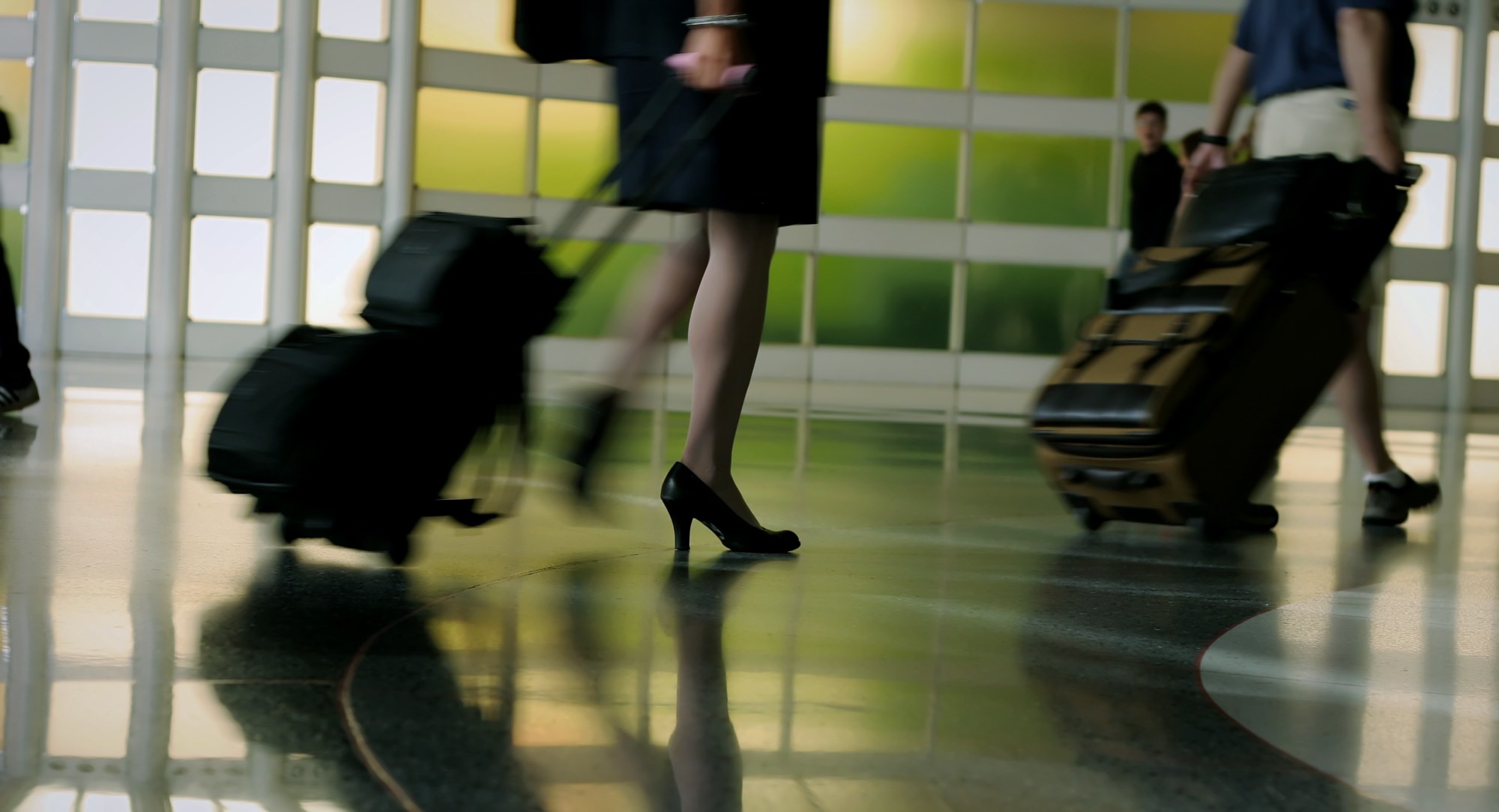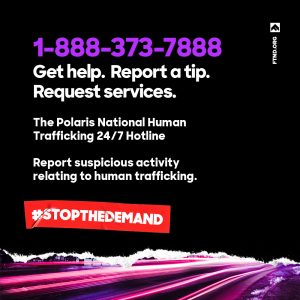Portions of the following article were originally posted on NBC News, by Kalhan Rosenblatt. 4 minute read.
Shelia Fedrick said she instinctively felt something was wrong the moment she saw the girl with dirty blonde hair sitting in the window seat of aisle 10 on a flight from Seattle to San Francisco.
“The girl looked like she had been through pure hell,” said Fedrick, 49, a flight attendant working for Alaska Airlines. Fedrick guessed that the girl was about 14 or 15 years old, traveling with a notably well-dressed older man. The stark contrast between the two set off alarm bells in her head.
Fedrick tried to engage them in conversation, but the man became defensive, she said.
“I left a note in one of the bathrooms,” Fedrick said. “She wrote back on the note and said ‘I need help.'”
Fedrick says she called the pilot and told him about the passengers, and when the plane landed, police were waiting in the terminal.
Airline Ambassadors
It’s that kind of intuition that former flight attendant Nancy Rivard, founder of Airline Ambassadors, is trying to instill in airline staff across the nation as she trains them on how to spot the signs of human trafficking.
Related: How To Identify (And Rescue) A Victim Of Sex Trafficking
U.S. Immigration and Customs Enforcement arrested 2,000 human traffickers and identified 400 victims last year. Since 2009 Airline Ambassadors has been working to make sure that when a trafficker flies with a victim, the flight crew is trained to spot and report them.

Recently, Rivard and several of her colleagues flew to Houston to meet with approximately 100 flight attendants who volunteered for the Airline Ambassadors training session on how to recognize human trafficking. Over two days, former victims related their experiences to the flight attendants.
In-flight crews were taught to look for passengers who appear frightened, ashamed or nervous; people traveling with someone who doesn’t appear to be a parent or relative; and children or adults who appear bruised or battered. They’re also taught to notice if someone insists on speaking for the alleged victim, doesn’t let them out of their sight or becomes defensive when questioned. Victims sometimes appear drugged.
Learning To Pull Back
Airline Ambassador flight attendants say one of the hardest lessons to learn is to pull back when they suspect a victim is on board.
“We tell people not to try to rescue because you can endanger the victim and yourself,” Rivard said.
Flight attendants call the pilot when they suspect a human trafficking victim is on board. The pilot then calls ahead to the flights’ destination where authorities are notified to meet the plane.
“One part of our training, and it’s the difficult part, but once we report it, we’re supposed to let it go,” says Andrea Hobart, 36, an Airline Ambassador trainer and flight attendant with Alaska Airlines. “Even though it’s hard to let it go, you transfer it into the hands of the authorities and they’ll pursue the case.”

Airline Ambassadors has also taken the fight to Congress to push for regular, required flight attendant training on all airlines in the United States.
Related: This New App Helps You Stop Sex Trafficking While You Travel
Airline Ambassador Sandra Fiorini, 69, testified before Congress in 2010 about trafficking she witnessed during her 42-year career as a flight attendant with American Airlines, including girls she suspected were trafficked after flying from Moscow to the United States under the guise of becoming actresses and models.
Last year, the FAA Extension, Safety, and Security Act of 2016 implemented training of flight attendants to spot potential trafficking victims.
But Rivard and Fiorini continue to lobby Congress for better awareness training for flight attendants.
Until that happens, Rivard will keep traveling across the country teaching flight attendants how to be the eyes in the sky protecting human trafficking victims.
What YOU Can Do
Not all of us are flight attendants, but each of us can do our part to know the signs of trafficking and speak up. It all starts with knowing what to look for. Websites like the Polaris Project, Hope For Justice, Stop The Traffik, and the U.S. Department of Health and Human Services all have extensive lists of red flags, and being familiar with them can help all of us identify and help trafficking victims even if we don’t anticipate encountering them.
The reality is that prostitution, sex trafficking, and porn are more closely linked than society would believe. The truth is that sex trafficking is a global issue, and it is only made worse by pornography. Any form of sexual exploitation only fuels the demand for the sex trade as a whole.
Related: The Inseparable Link Between Porn And Human Trafficking
In the end, porn fuels prostitution; and porn and prostitution are the products the sex trade exists to deliver.
We fight to bring awareness to the fact that porn isn’t harmless entertainment, and the porn industry wouldn’t be where it is today without sex trafficking and prostitution.
Related: 5 Simple Ways You Can Fight Sex Trafficking In Your Daily Life
Knowledge is power, and being aware of the facts is an important step in decreasing the demand for sexual exploitation and porn, and helping to eliminate sex trafficking. Help spread this knowledge and SHARE this article so that others can be aware. Together, we can fight to stop the demand for sexual exploitation in society. Change begins with one, and stopping the demand starts with us.
Start conversations by wearing our Stop The Demand tee which highlights the link between porn and human trafficking. By taking a stand, we can make a difference. Click below to shop:
Your Support Matters Now More Than Ever
Most kids today are exposed to porn by the age of 12. By the time they’re teenagers, 75% of boys and 70% of girls have already viewed itRobb, M.B., & Mann, S. (2023). Teens and pornography. San Francisco, CA: Common Sense.Copy —often before they’ve had a single healthy conversation about it.
Even more concerning: over half of boys and nearly 40% of girls believe porn is a realistic depiction of sexMartellozzo, E., Monaghan, A., Adler, J. R., Davidson, J., Leyva, R., & Horvath, M. A. H. (2016). “I wasn’t sure it was normal to watch it”: A quantitative and qualitative examination of the impact of online pornography on the values, attitudes, beliefs and behaviours of children and young people. Middlesex University, NSPCC, & Office of the Children’s Commissioner.Copy . And among teens who have seen porn, more than 79% of teens use it to learn how to have sexRobb, M.B., & Mann, S. (2023). Teens and pornography. San Francisco, CA: Common Sense.Copy . That means millions of young people are getting sex ed from violent, degrading content, which becomes their baseline understanding of intimacy. Out of the most popular porn, 33%-88% of videos contain physical aggression and nonconsensual violence-related themesFritz, N., Malic, V., Paul, B., & Zhou, Y. (2020). A descriptive analysis of the types, targets, and relative frequency of aggression in mainstream pornography. Archives of Sexual Behavior, 49(8), 3041-3053. doi:10.1007/s10508-020-01773-0Copy Bridges et al., 2010, “Aggression and Sexual Behavior in Best-Selling Pornography Videos: A Content Analysis,” Violence Against Women.Copy .
From increasing rates of loneliness, depression, and self-doubt, to distorted views of sex, reduced relationship satisfaction, and riskier sexual behavior among teens, porn is impacting individuals, relationships, and society worldwideFight the New Drug. (2024, May). Get the Facts (Series of web articles). Fight the New Drug.Copy .
This is why Fight the New Drug exists—but we can’t do it without you.
Your donation directly fuels the creation of new educational resources, including our awareness-raising videos, podcasts, research-driven articles, engaging school presentations, and digital tools that reach youth where they are: online and in school. It equips individuals, parents, educators, and youth with trustworthy resources to start the conversation.
Will you join us? We’re grateful for whatever you can give—but a recurring donation makes the biggest difference. Every dollar directly supports our vital work, and every individual we reach decreases sexual exploitation. Let’s fight for real love:



